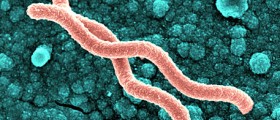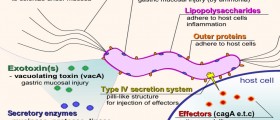
Inflammation of the stomach lining is what doctors call gastritis. It may affect a portion or the complete lining of the stomach, and the condition can be acute or chronic. Gastritis is characterized by stomach pains, sometimes also known as stomachaches. Patients can also experience other stomach discomfortssuch as; nausea, vomitting, and feeling bloated and full even after eating a small amount of food. People suffering from gastritis frequently report belching. All these symptoms are known as indigestion or dyspepsia.
Gastritis can cause irritation of the stomach lining, which can further provoke ulceration and degeneration of complete stomach tissue. Inflammation of the stomach may be the only medical condition present in the patients experiencing indigestion and other gastritis symptoms, or be associated with other diseases. This condition is often found in people suffering from stomach ulcers or GERD (gastroesophageal reflux disease).
Gastritis Causes
Mucus present on the lining of the stomach is our natural defense from the damaging gastric acid. When this mucus layer gets compromised, gastric acid affects the lining and provokes inflammation, being one of the reasons for developing gastritis. However, there are many other factors that can cause the same condition, without affecting the gastric acids. These conditions include: various infections and diseases, such as autoimmune disorders, problems with the blood supply in the stomach, stomach injuries or even cancerous changes of the stomach. Gastritis can also be the result of (ab)using certain substances, like drugs and alcohol.
Different Types of Gastritis
Gastritis can be an acute or short-term condition. In that case, symptoms are only present for a short period of time. There are also a number of patients who don't experience any symptoms at all (doctors call these patients asymptomatic). Erosive and non-erosive gastritis are the most common types of acute inflammation of the stomach lining.
Chronic or long-term gastritis is almost always present with the symptoms, and they tend to develop over time. Sometimes, chronic gastritis patients experience serious symptoms only during the time of gastric exacerbation. These patients can experience gastritis complications, including stomach bleeding and ulcers.
There are many types of chronic inflammation of the stomach lining. These include: atrophic gastritis, eosinophilic gastritis, granulomatous gastritis, ischemic gastritis, lymphocytic gastritis, reactive, radiation or postgastrectomy gastritis. Several other types are also classified as chronic inflammation of the stomach lining, and they are: autoimmune chronic gastritis, gastritis in immunosuppression, hemorrhagic or ulcero-hemorrhagic gastritis, hypertrophic gastritis (also known as Menetrier’s disease) and gastritis associated with Helicobacter pylori.

















Your thoughts on this
Loading...